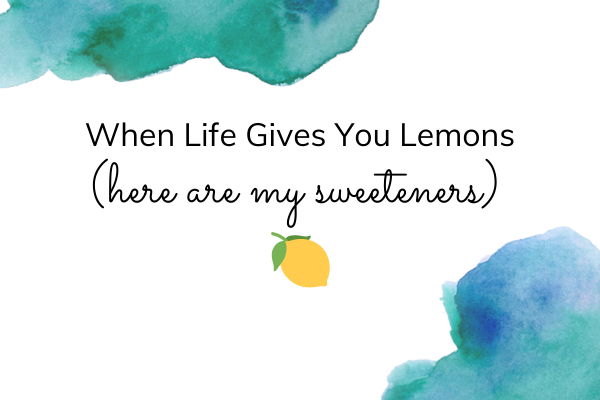My Experience on the Gut-Brain Axis
Seven years ago, I went to hospital with a severe stomach cramp. As it turned out, my intestines had twisted, which then lost blood supply, and two metres of it had to be removed.
Two metres might not seem like much when we have eight metres in total, but it had severe and surprising consequences on my physical and mental health. In the next few months and years after my operation I did a lot of googling about the gut and talking with specialists to sift the facts from the falsehoods.
Wellness and the gut-brain axis
Common expressions such as ‘gut-feeling’ and ‘gut instincts’ suggest we always suspected a link between gut health and mental well-being. Now we know for certain that our gut not only affects our digestion but our cognitive function too with a two-way communication between the gut and the brain. This is known as the gut-brain axis.
My operation had a huge effect on my gut ‘microbiome’. With complications in between, it took me about three years to fully heal my gut, and consequently my mental health as well.
The gut microbiome is made up of trillions of microorganisms that live in your intestinal tract. These microorganisms (mainly bacteria) play a key role in digesting the food you eat, and help with the absorbing and synthesising nutrients. They are also involved in many important processes including metabolism, body weight, immune regulation as well as brain functions and mood.
How to keep the gut bacteria healthy
The food you eat, as well as exercise, sleep, and regulating levels of stress, play a significant role in the balance of good and bad bacteria in the gut.
A diet high in fat and sugar negatively influences the gut bacteria and may contribute to insulin resistance, which can lead to Type 2 diabetes. If you regularly feed the wrong bacteria, they’re able to grow faster and colonise more easily, without as many helpful bacteria to prevent them from doing so.
To keep the gut microbiome healthy, you want the right balance of fibre and fermented foods, known as prebiotics and probiotics.
So what are pre- and probiotics?
While prebiotics and probiotics sound similar and work together, the two play different roles.
Prebiotics come from types of carbs, mostly fibre, which we can’t digest, and are food for the probiotics in the gut. Prebiotics can be found in fruits, vegetables and pulses. The fibre in these foods are digested by your good gut bacteria, which is then turned into butyrate, which is a short-chain fatty acid. Butyrate is one of the reasons why the balanced microbiome is a happy, symbiotic place, which supports digestive health and disease prevention.
Probiotics are good gut bacteria that naturally live in your gut and help your intestines break down the fibre in prebiotic foods. The right strain of probiotics can be incredibly beneficial for some people, even those with irritable bowel syndrome (IBS). I’m personally taking BioCare BioAcidophilus.
Which foods are rich in prebiotics?
Some of the foods that naturally contain prebiotics, include:
- Allium vegetables (onions, shallots, garlic, leeks, chives)
- Asparagus
- Bananas – the green, unripe ones
- Chicory Root
- Grapefruit
- Jerusalem artichoke
- Oats
- Pulses (beans, lentils, and peas)
- Watermelon
Which foods are good for probiotics?
Yoghurt, with live cultures, is one of the many foods that naturally contain probiotics. If yoghurt isn’t your thing, then the following fermented foods are also a great option:
- Kefir – a fermented milk, and non-dairy, drink cultured from kefir grains
- Kimchi – a traditional Korean side dish of fermented vegetables, slightly spicy
- Kombucha – a effervescent fermented drink made from tea
- Miso – a staple Japanese food, miso is a paste made with fermented soybeans
- Sauerkraut – finely cut raw cabbage that has been fermented, usually sour
- Tempeh – originated in Indonesia, a block of soybeans pressed together and fermented
(If you’re choosing these probiotic foods, make sure to choose the ones in the fridge and unpasteurised, as this process kills the bacteria.)
What about supplements?
You can get probiotic supplements in the form of pills, powders, and liquids that contain live beneficial bacteria or yeast.
Some probiotic supplements are designed to carry the bacteria all the way down to your large intestines, for better effects, while others probably don’t make it past your stomach acid.
Just like our fingerprints, our gut is different to each other, so just because something worked for your friend, it might not work for you.
If you’re not feeling the difference after a month, then it may be worth trying a different strain.
Final words
Eating plenty of prebiotic and probiotic foods will keep your gut bacteria balanced and will help support many aspects of your health.
Adding both pre- and probiotic foods into my diet has made such a massive difference in my wellbeing, especially my mood and energy levels. And I take the supplements as an insurance policy, which helps reduce my stress and anxiety about not getting enough fibre.
But it’s important to remember that it is possible to go overboard and have side effects, so speak to a specialist to make sure.
Alternatively, if you really want to check out what’s going on in your gut before taking supplements, why not get a gut microbiome test?
Atlas Biomed Group can give you a comprehensive report on your gut health plus consultation with a certified nutritionist. I recently did this and it was super informative, helpful and enlightening too! I plan on sharing more of my experience in upcoming newsletters, so stay tuned!
If you’re interested you can get 25% off the gut microbiome and DNA test kit with my affiliate link – get my test kit.
I hope this has helped. Here’s to your good gut health!







